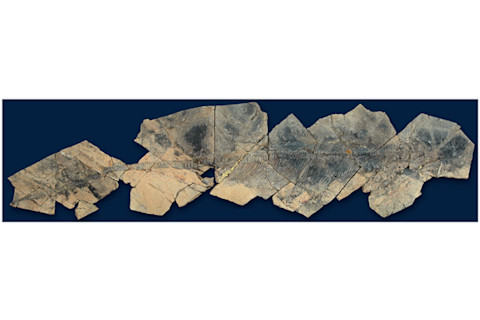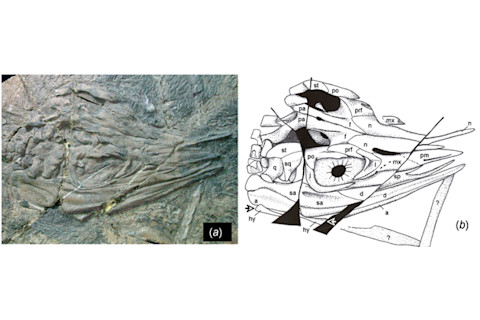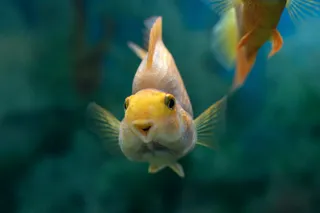
When the dinosaurs were ruling the land, other giant reptiles dominated the oceans. They included the ichthyosaurs, a group of reptiles that bore a strong resemblance to dolphins. They cut through the prehistoric oceans with streamlined bodies, flat flippers and powerful fluked tails. They gave birth to live young in the water. They snapped at fish and squid with pointed snouts, full of conical teeth. But one of them was different. Shastasurus is a very different type of ichthyosaur. It has a very small head, a short snout and, most importantly, no teeth at all. Martin Sander from the University of Bonn thinks that it was the black sheep of the family. It couldn’t have bitten its prey like other ichthyosaurs or modern dolphins. Instead, Sander thinks that it was a suction feeder. By quickly opening its mouth and pulling back its tongue, it created a sudden influx of water that swept its prey into its open jaws. Many whales, including sperm whales and beaked whales, hunt with a similar technique today and they too have greatly reduced teeth.

The part of its skull where jaw-opening muscles attached was particularly large. This, combined with its short snout, probably allowed it to open its mouth very quickly. It also had large hyoid bones allowing it to draw its tongue back sharply. With these adaptations, Shastasaurus would have been capable of creating a powerful suction. Sander not only developed new ideas about how this oddball ichthyosaur hunted, he also tripled the number of Shastasaurus species. In his work, he compared other fossils to specimens of the single known species - Shastasaurus pacificus, named after Mt Shasta in California. In doing so, he realised that two other ichthyosaurs – Guanlingsaurusliangae from China and Shonisaurus sikanniensis from Canada – were actually different species of Shastasaurus, and renamed them accordingly. Of the three species, lingae and pacificus ranged from around 4 to 9 metres in length. But sikanniensis was a true giant, with a maximum length of 21 metres. Modern suction-feeding whales come in very similar sizes – the smallest beaked whales are around 4 metres long, and the largest sperm whales are around 20 metres long. Sander thinks that this is no coincidence – it probably has to do with trade-offs between manoeuvrability, appetite and muscle power. Whales that are longer than 20 metres tend to be filter-feeders that sift small crustaceans from the water. Those shorter than 4 metres tend to be fast-swimming predators like dolphins. Ichthyosaurs, it seems, obeyed the same constraints. The toothed species were mostly shorter than 4 metres, and the suction-feeding shastasaurs were confined to the next size bracket. Reference:
Sander, P., Chen, X., Cheng, L., & Wang, X. (2011). Short-Snouted Toothless Ichthyosaur from China Suggests Late Triassic Diversification of Suction Feeding Ichthyosaurs PLoS ONE, 6 (5) DOI: 10.1371/journal.pone.0019480
More on ichthyosaurs:













